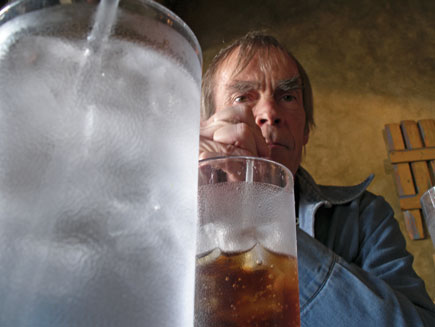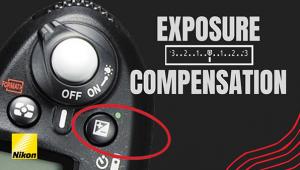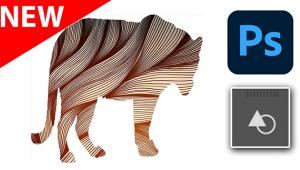Very glad to have seen this blog, thank you so much for all the great information,
Photo Lesson; Depth Of Field
When you focus your camera's lens on a subject, the point focused upon is sharp. Objects in the scene closer or farther than that point appear progressively less sharp as their distance from the focused point increases.
Depth of field refers to the area in front of and beyond the point focused upon in which things appear acceptably sharp in a photograph. Depth of field is really an illusion: Again, the point focused upon is sharp; everything in the scene closer to or farther from the camera is less sharp. Depth of field is based on the fact that our eyes can't differentiate between dead-on sharp and almost-sharp until the lack of sharpness reaches a certain degree. Within depth-of-field limits, objects in the photo will appear sufficiently sharp at normal viewing distances for the print size.
Depth of field affects every photograph. So it's a good idea to put it to work for you, rather than just leave it to chance. You have three controls over depth of field: aperture, focal length, and focusing distance. Smaller apertures increase depth of field, while larger apertures decrease it. Shorter focal lengths increase depth of field, while longer focal lengths decrease it. And greater focusing distances increase depth of field, while shorter focusing distances decrease it.
 |
|
|
1. Great Depth of Field
Great depth of field is handy when you have several important subjects in a scene, each at a different distance from the camera. It's also useful when you want to get an entire three-dimensional subject sharp, rather than just a portion of it.
To produce the needed depth of field, the best strategy is to stop the lens down. You can also increase depth of field by using a shorter lens focal length, but this will also change the framing of the image. And you can increase depth of field by moving farther from the subject, but this will also change the framing and the perspective. So the best way to increase depth of field generally is to stop the lens down. Note that stopping the lens down will reduce the light transmitted by the lens, and thus require longer exposure times in a given light level. If shutter speeds get too slow, it's a good idea to mount the camera on a tripod, or use flash. (A good rule of thumb for when to put the camera on a tripod is when shutter speeds drop below the reciprocal of the focal length of the lens: For example, with a 200mm lens, use a tripod when shutter speeds drop below 1¼200.)
 |
|
|
2. Selective Focus
While we're more often concerned with increasing depth of field, limiting it can also be effective. If you must shoot against a distracting background (i.e., you can't move the camera or the subject), you can minimize depth of field by shooting with the lens wide open, and thus throw the distracting background so far out of focus that it ceases to be a distraction. Macro photographers often take advantage of extremely limited depth of field at very close focusing distance to concentrate the viewer's attention on a specific portion of a flower or insect or other small subject, focusing carefully on that area and letting all else go completely out of focus.
 |
|
 |
|
|
Depth-of-Field Tips
1. Small apertures provide more depth of field, wide apertures less
2. Shorter focal lengths provide more depth of field, longer focal lengths less
3. Greater shooting distances provide more depth of field, shorter distances less
- Log in or register to post comments


One thing's for sure; I would never, EVER buy insurance from YOU.

I'll be glad to pass it on to my family and friends.dandruff remedyhair|birdhousesbird feeder|bean baggiant bean bag|reviewssite, best adjustable weights

Very glad to have seen this blog, thank you so much for all the great information,

I'll be glad to pass it on to my family and friends.dandruff remedyhair|birdhousesbird feeder|bean baggiant bean bag|reviewssite, best adjustable weights.cashadvance
http://www.personalcashadvance.com/

Very glad to have seen this blog, thank you so much for all the great information,
thanks.
http://www.actionaffiliatesgreenville.com/

Very glad to have seen this blog, thank you so much for all the great information, I'll be glad to pass it on to my family and friends.dandruff remedyhair|birdhousesbird feeder|bean baggiant bean bag|reviewssite.
a href="http://www.automobile.com/">is allstate insurance expensive

Exactly, you're very kind of us about comment!.
http://clashofclans.hack-free.com/about-us/















































